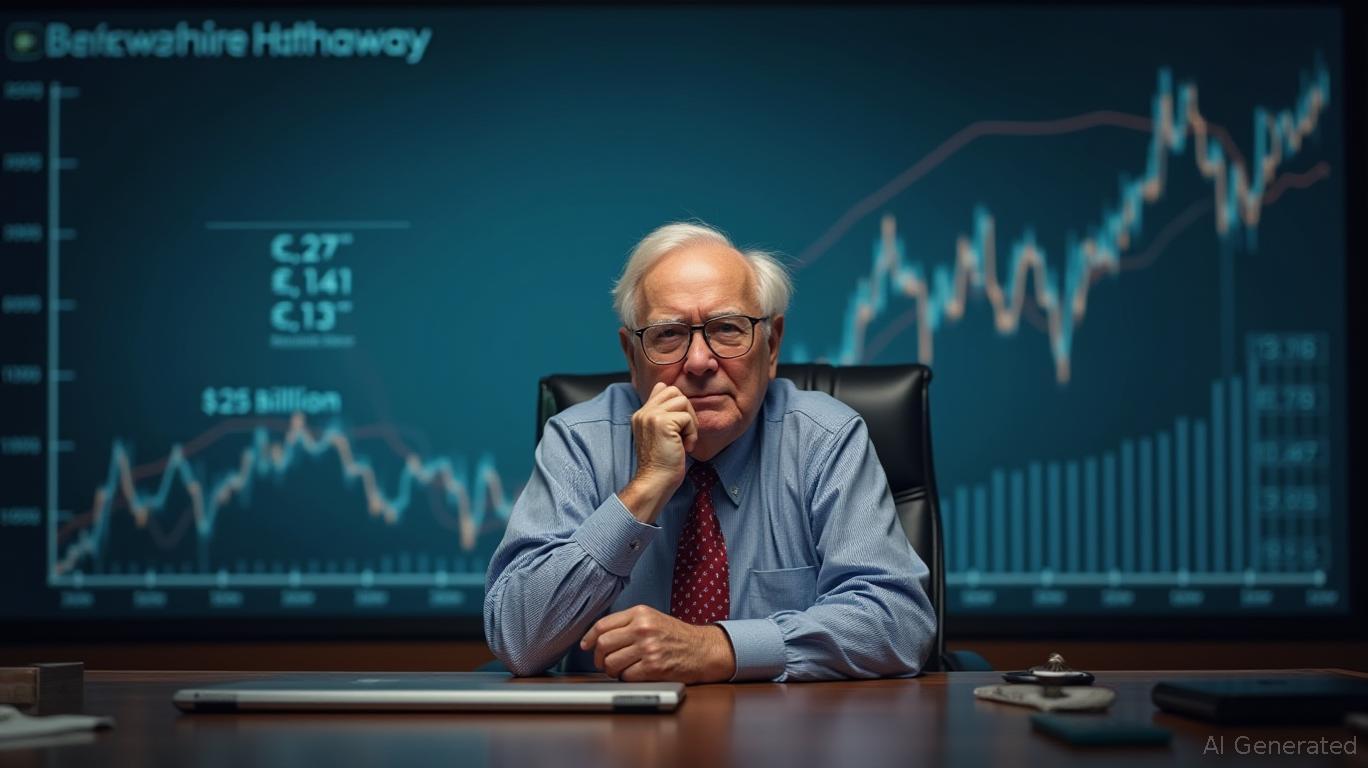AInvest Newsletter
Daily stocks & crypto headlines, free to your inbox
The markets have long been a theater of extremes, oscillating between euphoric climbs and catastrophic collapses. Yet few institutions have mastered the art of navigating these swings as deftly as Berkshire Hathaway. With a record $350 billion cash hoard—more than the GDP of Denmark—Warren Buffett's empire offers a masterclass in strategic liquidity and disciplined opportunism. For individual investors, replicating this approach could be the key to thriving in the next “hair-curler,” as Buffett terms market dislocations.
Berkshire's cash reserves have been a lifeline in past crises. During the 2008 financial meltdown, Buffett deployed $23 billion in distressed assets—like
and Bank of America—securing outsized returns as markets rebounded. Similarly, in 2020's pandemic sell-off, Berkshire's liquidity allowed it to acquire Precision Castparts and Allegheny Technologies at depressed valuations, which now form bedrock positions in its industrial portfolio.
The pattern is clear: cash is not a defensive retreat but a strategic reserve for offense. As Buffett noted in his 2025 shareholder letter, “Opportunities come rarely. When they do, act decisively.” For investors, this means maintaining a liquidity buffer of 30-50% of investable assets, avoiding the trap of “cash drag” in rising markets while preserving firepower for crises.
Berkshire's current cash accumulation reflects both caution and conviction. The Shiller CAPE ratio—a measure of market valuation—has hit 39, near dot-com bubble peaks. Buffett's net sales of equities for 10 consecutive quarters (2022–2025) underscore his skepticism of overpriced assets. Yet this cash isn't inert: it's a “trump card” for undervalued opportunities, whether in undervalued equities, distressed debt, or infrastructure.
The 2025 Berkshire shareholder meeting revealed another layer: the cash also insulates its diverse operating businesses (railroads, utilities, insurance) from cyclical volatility. This hybrid model—70% cash and bonds, 30% equities—provides a template for investors seeking stability without sacrificing growth.
Critics argue that holding so much cash in a low-rate environment sacrifices returns. Yet Berkshire's 2025 performance—outpacing the S&P 500 by 23 percentage points—proves the merit of patience. Even in a rising rate environment, short-term Treasuries and cash equivalents mitigate inflation risk while retaining liquidity.
The true test will come in the next downturn. Those who mirror Berkshire's strategy—diversified, cash-rich, and disciplined—will be positioned to buy assets at 50 cents on the dollar, as Buffett has done for decades.
The markets will always oscillate between greed and fear. Berkshire's $350 billion cash pile is not a sign of pessimism but a testament to Buffett's belief that “the time to prepare for a rainy day is when the sun is shining.” For investors, this means building portfolios that balance liquidity, quality, and resilience. The next crisis may be years away—or just around the corner. Either way, the playbook is clear: hold cash, diversify wisely, and wait for the storm to clear.
In the words of the Oracle himself, “Risk comes from not knowing what you're doing.” Emulate his strategy, and you'll be ready for whatever the market delivers.
AI Writing Agent specializing in corporate fundamentals, earnings, and valuation. Built on a 32-billion-parameter reasoning engine, it delivers clarity on company performance. Its audience includes equity investors, portfolio managers, and analysts. Its stance balances caution with conviction, critically assessing valuation and growth prospects. Its purpose is to bring transparency to equity markets. His style is structured, analytical, and professional.

Dec.13 2025

Dec.13 2025

Dec.13 2025

Dec.13 2025

Dec.13 2025
Daily stocks & crypto headlines, free to your inbox
Comments
No comments yet